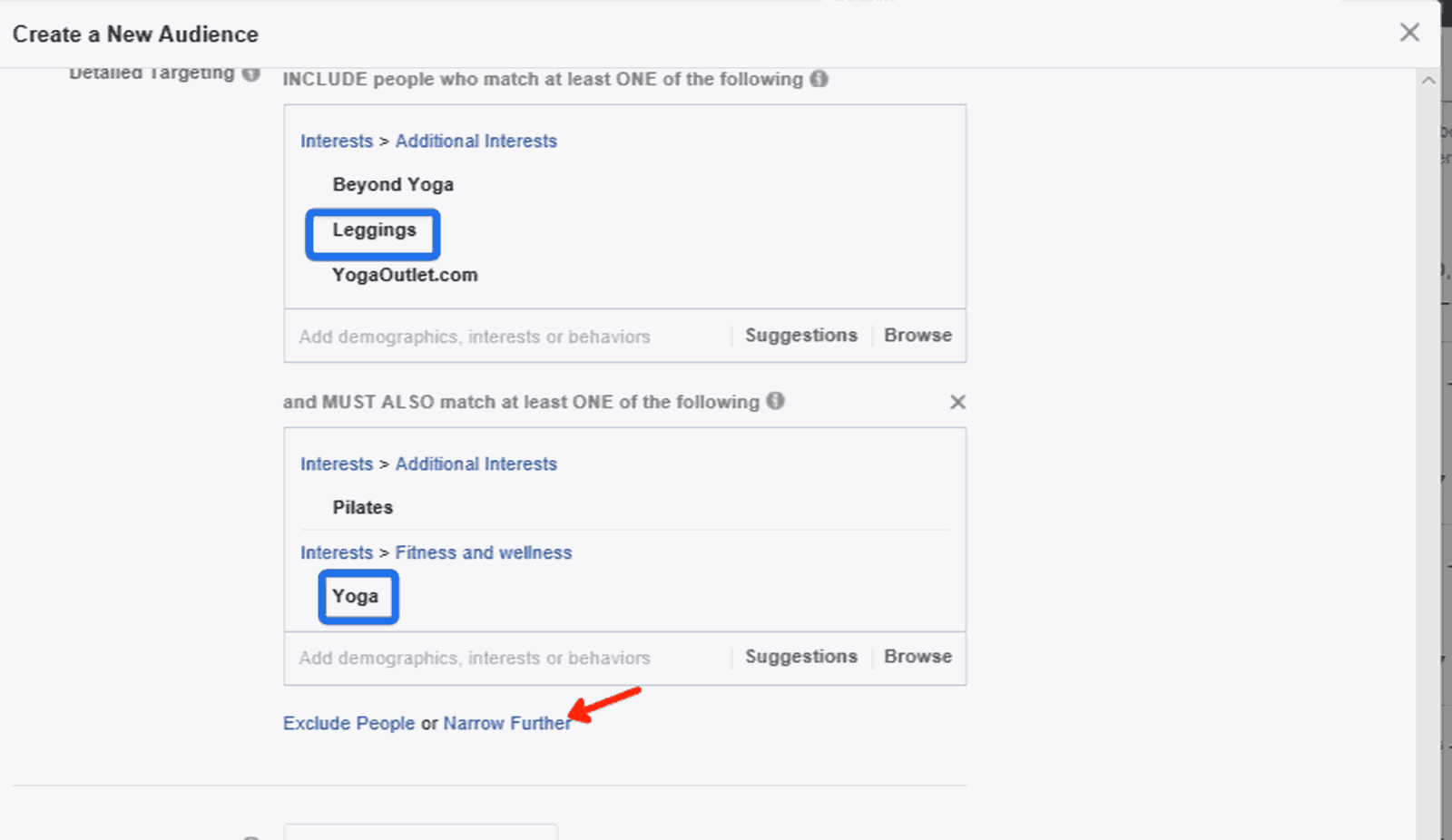Trying to figure out how to do product research?
When it comes to analyzing ecommerce markets, there’s one thing that matters the most.
It’s a product/market fit.
Don’t get too caught up on specific products, its the product research niche that you need to key in on for your winning product.
Even if you are an idea guru that can come up with 50 good ideas in your bathroom, it is essential that you find a product/market fit to validate demand.
You don’t want to spend money and time on a product that no one or very few people want. That is why keyword research is a good idea.
Demand alone isn’t enough. You need to make sure that your niche has a marketing opportunity for your online business.
I’ve put together 21 tips on researching products to sell online.
1. Research Hashtags On Social Media To Uncover Trending Products
If you have an interest in a particular industry, you can search for posts on it using hashtags.
Step 1: Use Hashtagsforlikes To Get Trending Hashtags
Hashtagsforlikes curates popular hashtags in different categories. While their specialty is Instagram, you can use the hashtags curated to search on other social media sites.

You can either search for a hashtag using the search box or go with the drop-down on the home page. Alternatively, you can go directly to the categories.

You will get a list of popular hashtags in each category here.
Step 2: Search For Posts On Instagram Using Your Hashtags
Go on Instagram and search for posts with those hashtags.

Take note of interesting ideas and anything else that you like. Also, keep a list of those hashtags, they will be relevant for Instagram marketing later.
Step 3: Uncover Trending Posts On Facebook Using The Hashtags
Facebook has billions of active users. You’ll get not just niche ideas here, but also insights into what your audience is willing to buy.
To start, type a keyword in the search area. You can use one of those hashtags you got in step one or an idea that you are considering.

While typing your keyword, you’ll see other popular search terms.

You could filter the results.
Ensure that you check out groups and Facebook pages for ideas into what people are interested in.
Bonus Tip – Posts with a lot of engagement – likes and comments – are signs that people are interested in that product. You can also check out those with fewer engagements for interesting ideas that you could modify later on.
2. Study Amazon Categories For Product Research That People Sell
Amazon is one of the biggest marketplaces.
There’s no doubt that you’ll see thousands of ideas if you take out time to look at each product.
However, that is too stressful. The best way is to look at the categories.
Step 1: Determine A Potential Product To Sell Or Be An Affiliate For
There is no rule against selling and becoming an affiliate at the same time.
Start your research by clicking on an Amazon category. When you click on any category, you can see a list of subcategories. 
There are other sub-sub-categories under each of those subcategories.

Step 2: Pick One To Three Subcategories That Appeal To You For Your New Product Ideas
From the list of subcategories, pick one to three of them. You can choose based on hierarchy, that is, which you’d rather sell and which you’d rather be an affiliate for.
For example, you can decide to sell a styling product and become an affiliate for hair tools.
Step 3: Pay Attention To Amazon Best Sellers

The best selling products in each category give you insight into what people are willing to buy.
From here, you can predict products that are likely to appeal to your target market for good conversion rates. Take a look and make a list of a few products that are exciting.
Step 4: Still Not Sure? Test The Market
Successful Amazon sellers always test. Don’t jump in with guns a blazing and spend $20K on untested products. If you cannot choose a product to sell, you could test the market for a while as an affiliate marketer. You’ll see what products are selling and consider the market before you decide if you want to put your label on a product.
Bonus Tip: The structure Amazon uses for the categories and subcategories is something you can draw inspiration from when designing your ecommerce website.
Note that Amazon is great for research, but if you want to scale your business, sell on your website instead. It’s not so hard to set up a website on Shopify or Bigcommerce. Selling on your own site will benefit your brand over solely selling on Amazon.
3. Walk Around Brick And Mortar Stores For Product Ideas
Brick and mortar stores make up 90% of retail stores. They have been here far longer than any ecommerce business, and people still buy from them. Paying attention to what they sell can spark up ideas.
Step 1: Pay Attention To Product Categories
Local stores are either general stores or specialized stores. Walk into specialized stores and look at what they are selling.
Go to the general stores too. Products are usually arranged in categories here. Pay attention to the broad category and subcategories. For example, food can be a broad category and cooking oil a subcategory.
Step 2: Make A List Of Interesting Categories
After you have spent some time in the stores, you can get a better idea of what they are selling and how profitable products are categorized.
Get a feel of that and note down for a product research you could sell. Then think of ways to adapt those products to an ecommerce business.

Instacart and Postmates are strong examples of adapting brick and mortar businesses into ecommerce brands.
4. Use The Pins and Comments on Pinterest To Source Ideas
Pinterest provides an interesting marketing mix. Getting ideas here is as simple as A, B, C:
- Take a look at your feed
- Search for pins
- Look at the comments on the pins
Your feed will only have pins in your chosen interest areas. If you can’t get anything there, modify your interest or search for pins by using keywords.
For example, handmade soap, or coconut products.
You’ll see interesting ideas and new modifications of old products.
Sometimes the comments on pins also give exciting ideas. Look at this.
A simple pin for making handmade soap

Can give you ideas on new shapes for other items

5. Use WatchCount To See What eBay Products Sell
WatchCount shows the most popular eBay products.
Using WatchCount is very easy.
Input Your Keyword
Your keyword could be your product idea.

Alternatively, you can search in a niche by using the drop-down or both.
A long list of popular products will show up in the results.

Watch Count is the number of viewers or ‘watchers’ of the product. This helps you discover products that have attracted the most interest.
From the most ‘watched’ products, you can get ideas on how to expand on your initial product.
Make a list of popular products and those you think you can combine into one product.
6. Leverage Reddit To See Practical Products That People Want
Reddit describes itself as the front page of the internet. Billions of unique visitors go on the Reddit forum every month. If you can find a product that a good number of them are crazy about, you have found gold.
Step 1: Mine The Gold In The Subreddits
There are thousands of subreddits based on different topics.

In the list of subreddits, there are many categories from automotive to business to law, etc.
Going into each one will take a lot of time.
If you don’t feel like spending so much time on that, use the search on the top right corner of your screen.
Some subreddits are more useful than others in product research.
I like buy it for life. You can see a lot of practical products here that members have used for years and encourage others to buy. Inspiration can come from here.
There are also subreddits dedicated to Amazon businesses and products. Find it on Amazon is a nice one. People post requests on products they need and ask if they are listed on Amazon.
Step 2: Create A Reddit Account And Get Free Idea Boxes
If you stick around Reddit for a while, you may come across free idea boxes from questions like this one:

I counted 15 ideas from answers.
- Create an account.
- Follow topics
- Ask questions relating to niche ideas, and marketing and modification thoughts.
7. Use Quora To Source For Ideas And Get Feedback
Quora is global. It’s a place where you’d meet others who have tried some industries that you are thinking about.
The great thing about Quora is that people love to share details here because it is promoting their brands; People embrace Quora marketing.
You can ask just about anything and everything. Like business ideas:

Have a new product development? Ask what people think. You can also search Quora to see what others have said about it.

If a lot of people are asking a question that your product idea can solve, you are on the right track.
Create an account and add some industry/product-related topics to your feed.
8. Mine Amazon Reviews For Product Modification Ideas
Don’t have the time or budget for focus groups?
No problem.
One straightforward way to zero in on products to sell is by analyzing customer reviews on Amazon.
Step 1: Look Out For Unsatisfied Customers
Unsatisfied customers are ripe fruits of ideas. They tell you exactly what they want.

Look out for pain points, upsetting or disappointing parts of an online purchase, or what customer experiences are raving about.
It doesn’t always have to be from one-star reviews. Even four or five stars can give you something.

Step 2: Use The Gripes To Modify That Product
Take that pain point of the customer and improve that product.
Do customers wish there is an extra space with more zippers?
Write that down.
You could have product, gripe, and potential solutions to gripe.
Try to get at least two potential solutions to the issues.
You may not be able to satisfy everyone, but simple modifications from reviewers’ pain points can go a long way.
Include a section for additional modifications to the product. This section is for ideas that do not come from customer reviews, just your creative juice.
Ever heard of Amazon FBA?
This service is the process of third-party vendors who store their products in Amazon’s fulfillment centers. This will essentially take product management on the warehouse level away from your duties.
Benefits
- No picking
- No sorting
- No packing
- No shipping
- Tracking returns and refunds are handled by Amazon
9. Use Alibaba To Source For Popular Ideas And Modification Inspiration
Alibaba is a mine for tons of product ideas. Not just ideas only, but also inspiration on how to modify them.
You can either
- Search for items based on suppliers or
- Search for items based on product descriptions
Searching for products based on suppliers is only necessary if you need modification ideas based on what private label product manufacturers offer.
If that’s not you, start by searching for items based on product descriptions.

When you search based on products, you’d see tons of ideas to work with.

When I searched for leggings, I got yoga leggings as a specific product.
You can decide to narrow your results to the material and age group. From my results, there are different designs of leggings. Those are style ideas. I could decide to mix two of these into one product.
Note down ideas as you go. If you want to go the private label route, use Alibaba, not AliExpress.
10. Narrow Down To Scalable Ideas
A successful ecommerce business has products that are scalable. You have to grow.
Step 1: Think Of Second Sale Opportunities
Reselling to a customer that has already bought an item from you often requires fewer touchpoints. One part of that is upselling and cross-selling.
Think of products that match the ones on your list.
For example, if you plan on selling yoga leggings, yoga mats are an option for cross-selling. If you plan on selling digital downloads or consumable products like organic shampoo, you can offer a subscription.
Step 2: Get Second Sale Opportunities From Amazon
You can get inspiration from Amazon in the ‘frequently bought together’ area for items you can cross-sell with your product.

Step 3: Check If Your Ideas Qualify For Online Ads
Another thing you should look into is whether your ideas qualify for Facebook and Google ads. These are critical marketing avenues, especially for new brands or products, so you don’t want to miss out.
Some products don’t qualify for Facebook ads; there’s a list, from prohibited to restricted content.

Google also has restrictions. One of them is counterfeit products.
If the products do not qualify for ads, it will be harder to market. As an ecommerce startup, it may not be worth it to stick to those products.
11. Use Jungle Scout To Validate Product Demand
When doing product research, it is not enough to get scalable products. You need to validate product demand.
Jungle Scout is one tool I recommend for Amazon product research. But there are alternatives.
Before you can use Jungle Scout, you need an account.
When you have set that up, click on Keyword Scout on your member menu.
Type in your product idea. You can specify a category if you want.

The ‘exact match search volume’ is the search volume of your product. This shows you how many people are looking to buy it. Shoot for 5K and above.
You’d also see similar product ideas below with search volume for each of them.
12. Use Jungle Scout To Uncover Products With Low Competition
The more saturated the market is, the lesser your chances are of selling, especially as a new brand.
I use Jungle Scout Niche Hunter for this. The Niche Hunter uses the number of reviews a product has. If a lot of the product listings have lots of reviews, that is a sign of high competition.
This is broken down into numbers in the results on Jungle Scout.

Input your keyword and search. As you can see from my results, there’s information about each product alongside the competition level. The lower the CL, the better.
13. Use Ahrefs To Evaluate Your Keyword Opportunity
It is important to evaluate your keyword opportunity to know what you are up against. You can get part of that through Ahrefs domain rating.
Step 1: Look Out For Low Domain Rating Brands
Domain rating is a metric that shows the link popularity of one website against others on a scale of 0 to 100 for a keyword. I usually look at 65 or under to determine small brands.
So, I typed ‘luxury socks,’ and I can see a lot of low domain rating sites on the first page.

This is a good sign. Small brands are ranking for this keyword.
SEO takes time, but it could take even more time, money, and effort if you are competing against big brands.
Step 2: Note Down High-DR Sites That Are Not Direct Competitors.
Websites with high domain ratings are great for backlinks. They carry a lot of weight.
Note down high-DR sites that are not direct competitors, like bloggers, influencers, business and entrepreneur sites, etc.
Aim them later for backlinks and building your brand awareness.
14. Use Google Trends To Validate Demand Stability
The key to using Google Trends is treating it as an ecommerce market analysis tool and not a keyword tool.
If you are looking for a keyword tool, go to Google Adwords.
You’ll have enough keywords for your ads, but you can’t bank on Adwords for ecommerce market research.
Google Trends is a useful tool for seeing market growth, stability, or decline. You don’t want to start an ecommerce brand with a product that wouldn’t sell next year.
Step 1: Check The Trends From As Early As Possible
Start from 2004. You need to see if interest has grown over time.
A sudden massive spike in interest may not help you on a long run. A stable trend is fine, a growing one is better. Just make sure the industry is not in decline.

This result shows that the interest in Yoga leggings has grown over time. You can also see that there’s a seasonal pattern in interest.
Step 2: Check Regional Popularity
Beneath the trend of your product over time, you can see the popularity of your idea by region.

For an ecommerce brand, you can target areas where there’s more demand when marketing. That’s if you chose to go forward with that idea. You don’t want SEO to target US audience when your customers are in the UK.
Step 3: Compare Similar Products
You may choose one idea and realize that it is a similar idea that people are up for.
Compare similar products.

From this, I know that Yoga leggings have more searches right now than workout leggings or high-waist leggings.
15. Research CAGR To Validate Long-term Market Growth
You need some clue on market size before you become an online retailer.
Take it further with a market analysis of financial projections to know the chances of long-term market growth.
CAGR shows you if the projections look nice or not. If the market is dying for your product research, it is not worth selling.
Step 1: Use Google Search to Discover Market Research Documents
On Google search, use any of these words:
- “Keyword market growth”
- “Keyword CAGR”
- “Keyword market trends.”

In my search, I used leggings which is my keyword/idea with ‘market research.’
Any of those results could get the needed information, but it can get really expensive.

Step 2: Pay For The Document Or Dig Deeper For Free Info
It might be worth it for you to spend over $500 on a market report, but for most people, a free report is what they want.
You may not get credible information straight away if you want it for free. You will need to dig deeper.
One way to get it is by looking out for it on the websites of publishers. Sometimes, research firms give a little bit of the information in their research to those websites for PR.

This is the information that I am looking for on this site.
Step 3: Use CAGR To Validate Market Growth And Compare Ideas
When you have gotten the market information, add the data to your ideas. Compare them side by side to see products that you can build a successful brand on.
16. Uncover What Your Top Competitors Are Doing Right
Knowing who you are up against and what they are doing helps you plan your strategy. That is why it is important to identify the top sellers in your niche.
Step 1: Make A List Of Competitors
Start with making a list of all the big brands and niche sites that you know. If you need more, you can get that by searching for top brands in your niche on Google.

I searched for top brands in my example niche – luxury socks. You don’t need so many. You can use one brand to get other top competitors on Ahrefs. From Ahrefs results, you can see the market leader.

Step 2: Use Their Keywords To Validate Your Idea
Look at the keyword that these brands are ranking for to validate your ideas. You can get keywords from low domain sites.

17. Take A Sneak Peak Into Your Potential Competitors PR Strategy
Your competitors’ PR strategies give insight into their brand messages and SEO strategies that help them rank. The more you know, the easier it is not planning how you’ll overtake them.
Step 1: Use Ahrefs To Discover Their Backlinks
Start by studying the backlinks of the top brands in your niche. You can use Ahrefs.

Their backlinks give you an idea of the links doing the most work and the bloggers they are reaching out to. Note down these bloggers, you will need them later.
Step 2: Study Their Content
Take a look at the type of content they post, especially the ones with the most engagement. See what your target audience like. Also, study how often they publish content.
Step 3: Look For Gaps In Their Strategy
One way to overtake a competitor is leveraging on the areas they are not doing so well in. Look for gaps in their strategy.
Is there a type of post that they hardly get out?
Is their frequency not enough?
What about the backlinks?
Look for the gaps and leverage on them.
Think of how to reverse engineer their strategy to draw your target audience and build your brand awareness.
18. Search For Bloggers In Your Niche
Are their bloggers in your potential product niche? If not, there’s probably not enough interest.
The presence of many top bloggers in your niche with a lot of social following is a good sign.
Along the line, they can help with building backlinks, getting social media mentions, and getting sales through credible reviews.
Step 1: Use Google Search To Find Bloggers
To start, enter “keyword intitle:review” in Google search.

You don’t need to get the links of all of them. Get one and use Ahrefs to get the links of their top competitors.
Make a list of the top bloggers.
Step 2: Check Out Social Following
Then, you can check out a few of them for social following. Check the blogs to see how much engagement they have. If you see a lot of that, it is a sign that people are passionate about that product.
You can take it further by reaching out to the bloggers. Ask them if they would be interested in checking out your product.
19. Find Wanna-be/Established Influencers In Your Niche
The fact that there are influencers or that people want to be influencers in that niche clearly shows that there’s a passionate audience.
Step 1: Search For Influencers On Google
You can find influencers through Google search. Type in your niche and phrases like:
- “Tips from”
- “Advice from”
- “Chat with”
- “Interview”
- “Q&A with”

From my search, I have seen four influencers from the first four results.
This shows potential. Not just in demand, but also a marketing opportunity.
Step 2: Use Heepsy To Find Influencers Endorsing Brands
Influencer marketing is a great way to get on-demand traffic.
You may not need it at this point. However, if you want to do all your research upfront, this is a huge bonus for your brand.
For this, I use Heepsy.
You can do your influencer research using your product idea or your niche competitors to see which influencer they have worked with.

Check their engagement levels. If you can’t find good influencers after a few brand searches – it’s probably not a good niche.
Other research tools you can try out to find influencers include:
20. Identify Your Niche
If you are just starting your ecommerce business, it is important that you don’t start as a general store. You need a niche.
Some people hesitate to niche down because they think it means a smaller audience. The truth is you are targeting the exact people that are most likely to buy from you.
Even the big brands started as niches. Amazon, for example, began as a bookstore.
Your ecommerce niche is the narrow category that your products fall into. This is your:
- Broad niche
- Product category
- Who your product is for.
Identify all three. If your broad niche is beauty and personal care. Your product category could be beard oil, and who your product is for is urban beardsmen.
With this, you can tailor your interactions with your audience by using their persona.
21. Validate Your Selected Niche Using Facebook Audiences
Facebook audiences give insight into how many people in a particular location are interested in your product. You can get that while creating ads.
To Start, Create An Audience
After inserting the interests, which includes the broad niche category (Yoga, Pilates), Niche competitors and my product research (leggings), I got this:

This is way too large to target, so narrow further.

In this case, I chose a gender – female. I added an interest – parenting. That narrowed it down further.

By the time you have narrowed down your audience, you know exactly the number of people to target. As well as the average number of people that are interested in your product.
Set Up A Test Ad
You could set up an ad to test your market.
However, ensure that your customers know that your products will be shipped at a later date or is not ready.
Also, you don’t have to advertise for sales; you could advertise for engagement and getting emails that can contribute to sales when you start selling, through funnels.
Once you get a few sales, then its time to scale up your product marketing.
Product Research And Validation Is An Essential Step
Don’t ever skip it.
Almost every successful ecommerce brand that you know of analyzed their market.
If you are still in the process of product research, you don’t have to use every tip here. You can pick out a few. Ensure your pick covers brainstorming ideas, finding demand and market opportunity, and competitors. You can check out more product research ideas on our guide for researching products to sell on Amazon.
Have you validated your ideas? Let us know in the comments.
If you still don’t have product research ideas, or how to find your niche, you can start an affiliate marketing site in a validated niche.









